
Dave’s Mangrove Jack Fishing Tips
- Mangrove jack fishing in north Queensland is about understanding the tides and how the fish respond to tides. Being able to locate fish in a system is critical, and they’re not always holding tight to snags.
- If mangrove jack fishing is your top priority, don’t be distracted by barra. Barra will happen as a by-catch when targeting jacks, so stay focussed on the red fish.
- Jacks don’t commonly reach the large sizes in north Queensland estuaries that they often do down in southern Queensland. Fish over 50cm are reasonably abundant, but 60cm plus fish are very rare. However, the numbers and aggression of jacks is higher in the north.
- “Neapish” tides tend to fish best, as jacks like some flow, but smaller water movement makes it easier to get lures where you need them and usually results in clearer water. Jacks will move away from structure a little more when the water is flowing and tend to hang tighter to structure during periods of low flow.
- Hot, humid days with a small amount of tidal movement (1.2-1.5m) are uncomfortable for anglers, but offer the best jack fishing. Low light conditions and a gentle breeze often help to encourage jacks to feed more freely.
- Quality jacks can often school up in August/Sept as the water starts to warm. Often they’re found in areas where deep mangrove roots are still in the water at low tide and there is a submerged log or other timber present also.
- Hodgie likes the last part of the run-out and the first part of the run-in tide best for jack fishing. At these times the bait is forced to follow the water out of the mangrove roots and the fish will often be waiting in small drains that aren’t visible on higher tides. Sometimes these drains aren’t much more than a foot wide or a foot deep.
- Mangrove jack can often be found patrolling the gently sloping flats at the edge of a dropoff. At these times anglers can target them on very light tackle, throwing small surface poppers.
- Don’t fall into the trap of thinking that fish choose lures by price tag. Hodgie find anglers often overlook the mid-priced lures that are still very effective, thinking they need to buy high-end lures to have a chance with jacks.
- Use your electric motor to get close to the fish. Often in jack fishing a 15m cast is a long one, 5-10m, pin-point accurate casts are usually sufficient.
- Tips for accurate, short-range casting with baitcast gear: use a short rod with a soft tip, start with the lure an inch or less from the rod tip, back the cast control off and magnetic control (if fitted) down to 2 out of 10. Make the rod do the work and minimise the amount of arm movement. For overhead casting, roll your wrist to give the wrist full movement and aim 6ft above the target, feathering the spool with your thumb to slow the flight and drop the lure on the target. A backhanded flicking cast is ideal for low-trajectory casting or skip casting (refer to Hodgies Youtube channel for more info).
Hodgies Mangrove Jack Fishing Tackle
- Hodgie doesn’t troll lures, his fishing is all casting and accuratelky placing a lure is critical, so he’s quite particular about the rods he uses. A short, fast taper rod with a soft tip allows deadly accurate casting but has enough power in the butt to enable fish to be wrangled from cover.
- A Samurai Infinite 8-16lb rod or a Samurai Refraction is a good choice for those who have a little more budget. For those on a budget, the Atomic ArrowZ rods will do much of what’s needed, but at a lower price point. A baitcast reel with a very light spool and good corrosion resistance such as Shimano, Daiwa and Abu. The Abu Premier or the Shimano Chronarch are both excellent reels for this style of fishing. 20lb braid and an abrasion resistant 30lb fluorocarbon leader are perfect as an all-round outfit for northern jacks due to the smaller sizes.
Hodgies Mangrove Jack Fishing Lures
- A 5” Halco Madeye Paddle Prawn is a great soft prawn. Hodgie likes that luminescent colour with an Atomic Seeker 5/0 EWG worm hook in 1/4 oz weight is a great starting point for anyone learning to target jacks. The weight can be decreased for surface or shallow presentation or increased for deep water or stronger currents. Rigged weedless, this lure can be cast into heavy cover, skipped under overhanging vegetation and so on. This is the lure to use when there is some flow and the jacks are not taking surface lures.
- The 90mm Bassday Sugadeep is a great suspending hard body lure that can be allowed to “hang” motionless in a jacks face, which often results in an explosive bite the instant the lure gets twitched. These are a great option when fishing around snags on the slack water at the bottom of the tide. Hodgie also mentioned the Tilsan Barra as another excellent mangrove jack option in the hard-bodied lure class.
- The 60mm version of the Halco Roosta popper is a great surface lure, with the smelt colour effective when the water is clean and the fluorescent colours when the water is less than clear. Hodgie will always start with a surface lure and will switch to the Paddle Prawn or Sugadeep if the surface action isn’t happening.

Dave “Hodgie” Hodge
“The Barefoot Fisherman”
Hodgie will be known to many ALF listeners as the host of “The Barefoot Angler” TV show. A cod enthusiast, since relocating to Townsville Dave has reinvented himself as a gun mangrove jack specialist – a pursuit that plays well with his famous accuracy casting skills. Hodgie writes for fishing magazines and speaks at boat shows and fishing events, where he frequently stars in trick casting exhibitions.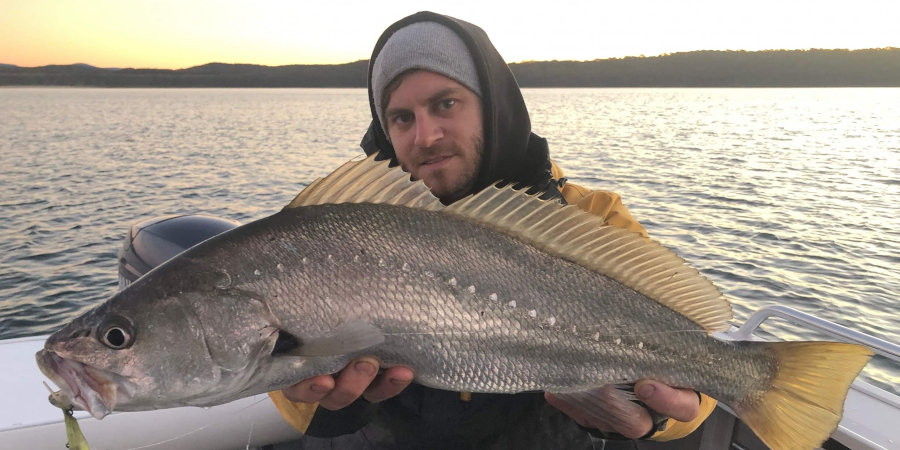
Secrets To Lure Fishing In Lake Macquarie During Winter
EPISODE 630 Lake Macquarie lure fishing gun Dan Guilfoyle is back with advice on how to enjoy hot winter fishing in Lake Macquarie. Dan Guilfoyle Lake Macquarie Fishing Identity Dan grew up fishing Lake Macquarie and as a youngster used to walk the banks and wade the...
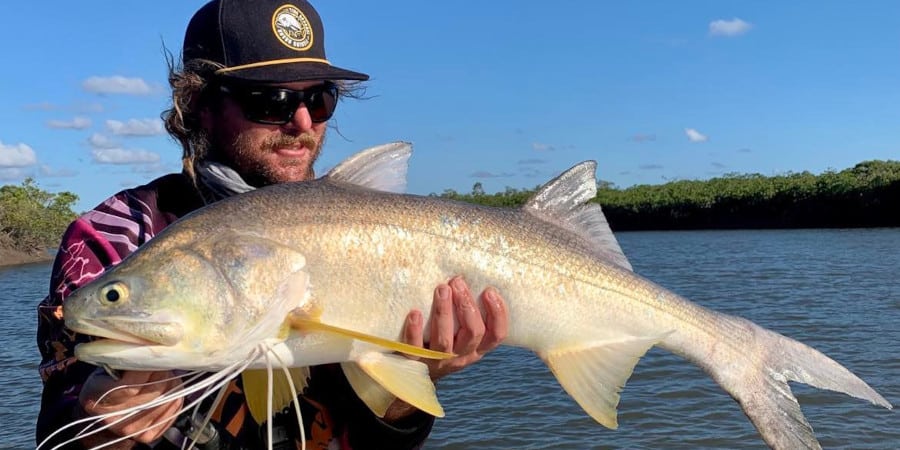
Episode 593: Great Sandy Straits Autumn Fishing With Ryan Holdsworth
The Great Sandy Strait has almost unlimited barramundi, mangrove jack and threadfin habitat….. you just need to know how to fish it. Fortunately, today’s guest Ryan Holdsworth gives his tips freely and will put you on the right course to success!
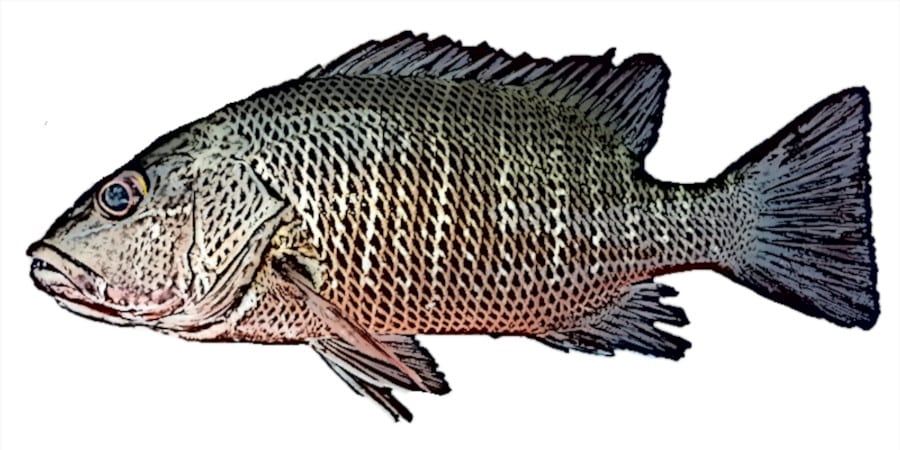
Episode 580: Mangrove Jack Roundup With Greg Vinall
Mangrove jack are a popular North Australian specie, but how much do you know about their habits and behaviours?
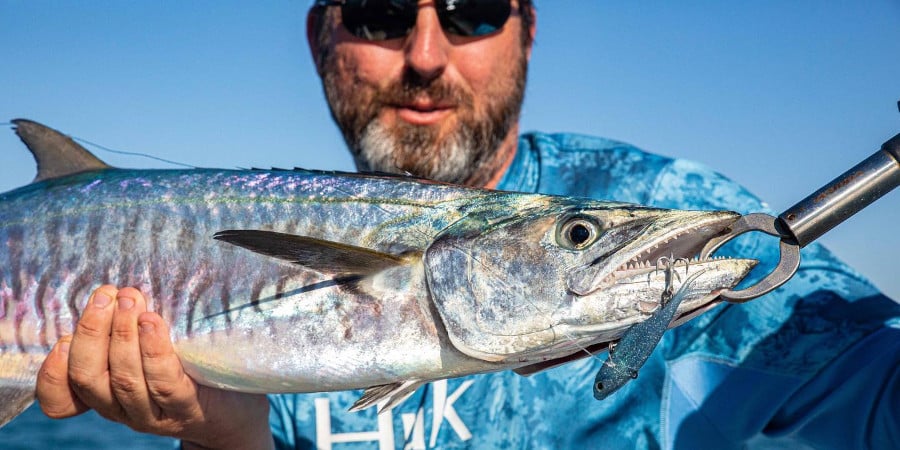
Episode 547: Fishing Around Exmouth In Spring With Steve Riley
Every time I interview Steve Riley about fishing the Exmouth area I get blown away by the opportunities on offer, but I think this interview could be my favourite so far. Steve spills the beans on five land-based fishing spots that are available to visiting anglers during spring. In the course of the conversation we cover everything from bream and whiting to tuna, reef species and pelagics including monster GT from the beach. What a destination!
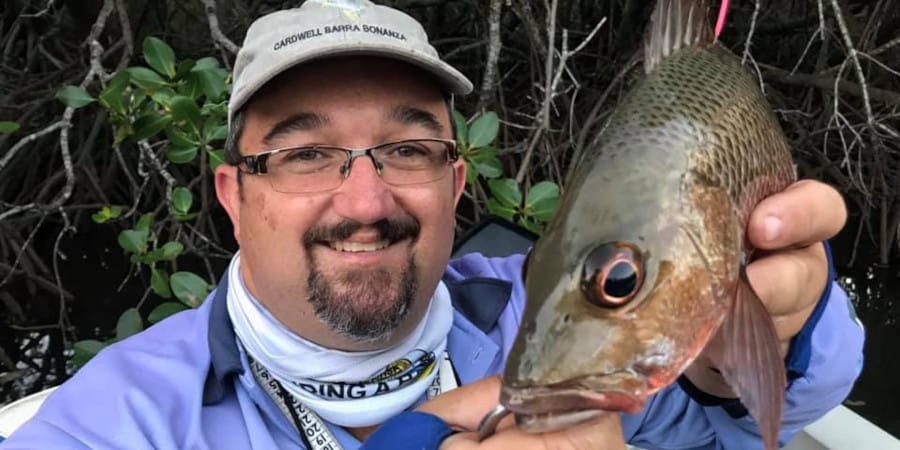
Hinchinbrook Winter Mangrove Jack With Adam Royle
They might be considered a “warm-months” species, but Adam Royle fishes for Hinchinbrook mangrove jack right through the winter months with good success – even on topwater lures! In this episode he does a great job of explaining exactly how he achieves good catches of red dogs when the water is a little on the cooler side.
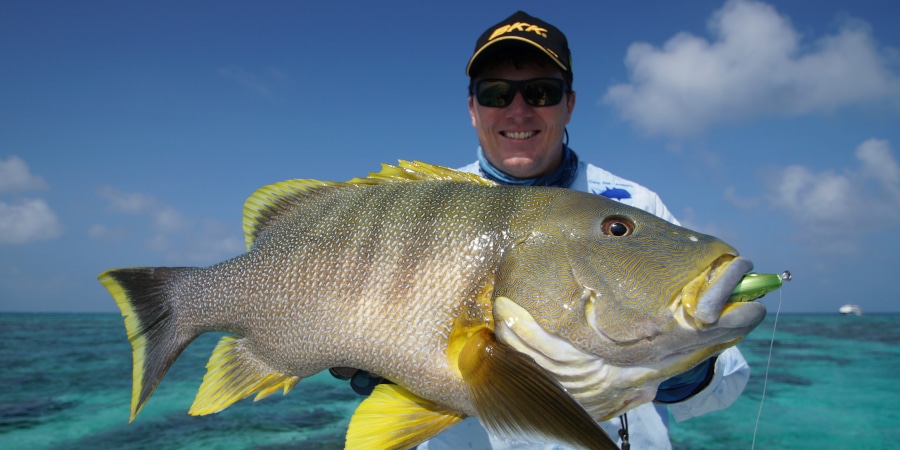
Episode 525: Five Best Queensland Sportfishing Destinations With Damon Olsen
Damon Olsen has spent over 20 years exploring every corner of every reef between Fraser Island and the tip Of Cape York. In today’s episode he walks us through the five destinations he’d really like to go back and fish all over again!

Secrets To Lure Fishing In Lake Macquarie During Winter
EPISODE 630 Lake Macquarie lure fishing gun Dan Guilfoyle is back with advice on how to enjoy hot winter fishing in Lake Macquarie. Dan Guilfoyle Lake Macquarie Fishing Identity Dan grew up fishing Lake Macquarie and as a youngster used to walk the banks and wade the...

Episode 593: Great Sandy Straits Autumn Fishing With Ryan Holdsworth
The Great Sandy Strait has almost unlimited barramundi, mangrove jack and threadfin habitat….. you just need to know how to fish it. Fortunately, today’s guest Ryan Holdsworth gives his tips freely and will put you on the right course to success!

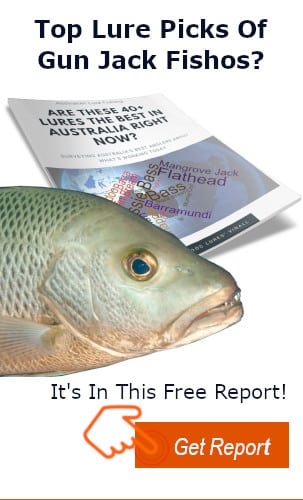
Great Episode ….one of the best Greg. Keep up the good work mate, your podcast seems to just get better and better!
Gday Paul, thanks mate, glad you enjoyed it. Was definitely one of my favourites to record and publish, too.
love the content great broke is hodgie
Hi Hodgie,
I have never used CSI PRO-TEC POWDER PAINT.
What colours do you use? Are you trying to make them as bright as possible or just to match the lure? Or does colour not really matter at all?
Many thanks
G’day mate. Yeah the detail to the presentation is the main ambition really. That could mean that contrast is the aim, and in that case I’d put a combination such as the alright pink Paddle Prawn with a bright green Protec weight on a weedless hook. There does seem to be a pattern as to which colour works best in what water conditions and that is green and chartreuse in the clear water scenarios and bright Pink in the dirty water.
We generally use more natural colours like the Carolina Pumkin Atomic Prongs in clear water situations and fluro’s like the radioactive Rooster in dirty water. In this situation it’s more about contrast, and the Green in clear water theory goes out the window and green is used to create the contrast.
Since we’ve started using it our hookup ratio has increased as it creates what we refer to a hotspot and centralises the bite. It’s important to remember that the UV active Protec stands out down deeper than standard paint or finish’s as UV light penetrates 70% deeper Thant a normal light ray and this is, I believe to be the key.
Cheers mate, and hope this helps. Hodgie.
Thanks – I really appreciate it
Hi Hodgie,
What colour ProTec for the jig heads? Do you go as bright as you can? Match it to the jig heads? Or match it to the water colour?
Many thanks
Hey Hodgey, have you ever thought about going for the holy grail, aka trying to nail one of the monster jacks hiding in the 4km stretch from the bottom of Gleeson’s weir to the top of Aplins? They’re not a myth; they exist and are going on nigh 20 years of age now and some of them have gotta be getting close to a meter. The put at least 10x as many fingerlings in Awoonga dam and they’re almost never caught because they’re so wary, cunning and have great eyesight; catching one here would be nearly mission impossible I reckon but it’d be fish of your life for sure.